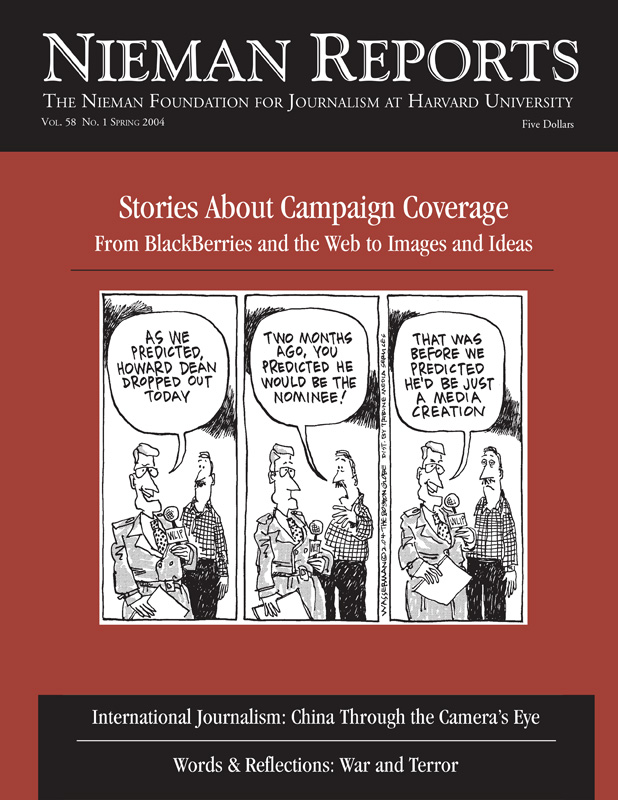From the mid-1960’s to the early 1980’s, Li Zhensheng, a photojournalist, took thousands of rolls of film for the Heilongjiang Daily, the leading newspaper in Harbin, China. He was able to document the “human tragedies and personal foibles” of the Cultural Revolution and its aftermath. Many of his photographs and interviews with him are published in “Red-Color News Soldier.” What follows is an excerpt from the book’s introduction, written by Robert Pledge, cofounder and director of Contact Press Images, and four of Li Zhensheng’s photographs.
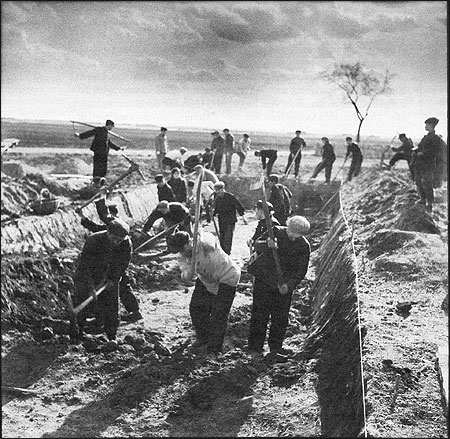
Organized in production brigades, peasants were assigned backbreaking farm work such as constructing pigsties at the Liaodian commune, Acheng County, in May 1965. Photo by © Li Zhensheng/Contact Press Images.
“Red-Color News Soldier” is the literal translation of the four Chinese characters printed on the armband first given to Li Zhensheng and his rebel group in Beijing at the end of 1966, eight months after the launch of the Great Proletarian Cultural Revolution. …
For a long time in the Western world, Mao Zedong and the Cultural Revolution were perceived with amazement and fascination; only very rarely with horror. … Even today, all the chaos of that period can seem somewhat romantic and idealistic in comparison with the contemporary Chinese society we see and hear about.
With this in mind, it was necessary to produce a clearer and more truthful image of the turmoil that turned China upside down during the Cultural Revolution. Li was the one person who, through his exceptional photographic legacy, could convey this truth on the printed page. …
Over a period of several years, Li delivered to the offices of Contact Press Images in New York approximately 30,000 small brown paper envelopes bound together with rubber bands in groups according to chronology, location, type of film, or other criteria that changed over time. Each envelope contained a single negative inside a glassine pouch. Some of these had not been removed since Li had cut them from their original negative strips and hidden them away 35 years earlier. On each envelope Li had written detailed captions in delicate Chinese calligraphy. Communes and counties, people’s names, official titles, and specific events were all carefully noted.…
For three years, from 2000 to 2003, a small group … met nearly every Sunday to collectively piece together this history of a largely unknown era. In these exhausting and, at times, animated sessions, we pored over a variety of archival and scholarly documents, conducted interviews, reviewed images, and even listened to Li sing revolutionary songs from the time. …
But thanks to Li, seemingly anonymous faces and places take on names and identities. Li shows the surreal events to be all too real.… We will be forever grateful to Li for having risked so much to doggedly preserve the images in this book at a time when most of his colleagues agreed to allow their negatives to be destroyed. … History is indeed Li Zhensheng’s paramount concern and this book’s main purpose: to remember and revisit those haunting and tragic events that were the Great Proletarian Cultural Revolution.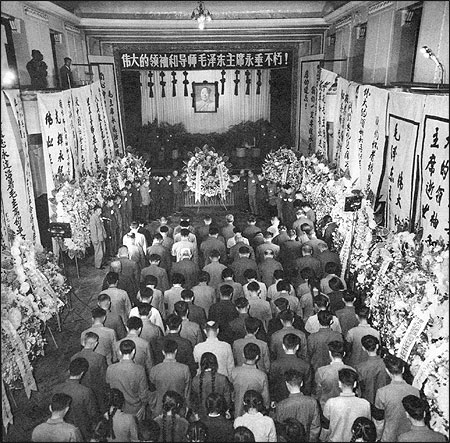
Party officials filled the mourning hall at the office building of the Heilongjiang Party Committee in Harbin in September 1976. Photo by © Li Zhensheng/Contact Press Images.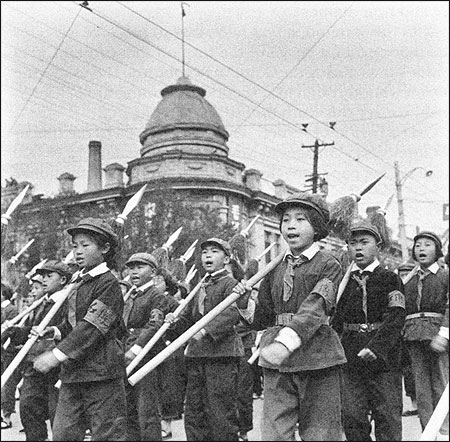
On National Day, October 1, 1966, schoolchildren carried red-tasseled spears and wore Red Guard armbands as they paraded through the streets of Harbin. Photo by © Li Zhensheng/Contact Press Images.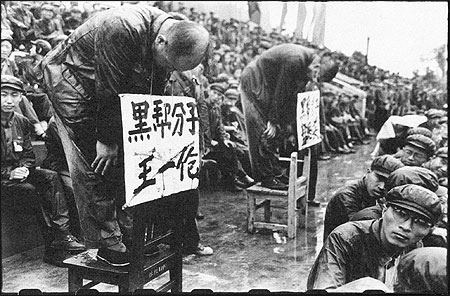
Top Party officials are denounced during an afternoon-long rally in Harbin’s Red Guard Square in August 1966. Photo by © Li Zhensheng/Contact Press Images.
“Red-Color News Soldier” by Li Zhensheng, published by Phaidon, September 2003, www.phaidon.com. Photographs and text courtesy of Phaidon. Li Zhensheng is currently living in New York City engaged in research and writing.
